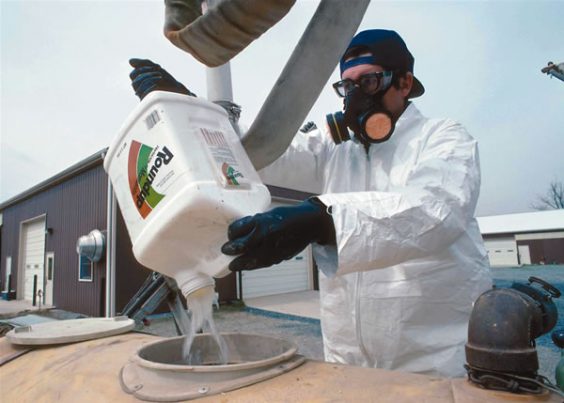A significant body of research now suggests that dietary exposure to glyphosate can alter the microbiome in the human stomach. One outcome of shifting the microbiome in the human GI track is what is often referred to as “sour stomach.”
Anyone who has experienced a sour stomach knows what it is (but perhaps not by name), although there can be dozens of causes.
It has been known and accepted for years that impairment of the Shikimate pathway in plants is the major mechanism of action of glyphosate through which glyphosate-based herbicides (GBHs) lead to plant death. In short, glyphosate impairs the production of plant secondary metabolites that are essential when plants must respond to a viral or bacterial challenge.
So, glyphosate-based herbicides kill plants by rendering them defenseless. Glyphosate does not create the pathogen that makes plants sick, but it does disarm plants and render them vulnerable. So, it acts as a sick-plant promoter.
With exposures below lethal doses, glyphosate also alters the mix of plant secondary metabolites in ways that change the taste and nutritional profile of plants, and in general scrambles basic metabolic and physiological functions. This, in turn, alters the nutritional profile of harvested crops, raising the levels of certain plant secondary metabolites and lowering others.
Scientists are just beginning to reach these layers of the onion, but public support for such research is almost non-existent.
Now, a team of scientists in Cornell University’s Department of Biological and Environmental Engineering has gotten very clever, and shown that glyphosate also induces important, specific changes in the soil microbiome, via adverse impacts on certain Pseudomonas soil bacterium species.
The result of such perturbations can lead to changes in the mix of Pseudomonas species and alteration of the production of aromatic amino acids in the soil. Many of these biologically active molecules are important precursors for beneficial secondary plant metabolites that are produced in plant roots, stems and leaves.
Others are precursors for plant proteins, while others play essential roles in DNA biosynthesis and a host of metabolic pathways and cycles. There was, e.g., a five-fold reduction in some Pseudomonas species in tryptophan levels, and up to a 200-fold increase in other metabolite levels.
This new paper drives home the fact that in farming systems, there are so many connections between and among microorganisms, between the soil and physical environment, and between farming system practices and technology and everything else.
Many organisms must thrive, but not to excess, to preserve soil microbial biodiversity. Anything that alters soil microbial communities and dynamics will invariably impact the plants growing on or in the soil. Changing the soil microbiome will change, and sometimes disrupt, the ability of plants to respond to the biotic and abiotic challenges they must overcome, as well as the quantity and nutritional quality of food from harvested crops.
So, it should come as no surprise that the most heavily applied pesticide in history – glyphosate – leaves a big, albeit mostly mysterious, footprint that begins with the soil microbiome and evolves in many ways all the way up the food chain to you and me.
Source:
Ludmilla Aristilde et al., “Glyphosate-Induced Specific and Widespread Perturbations in the Metabolome of Soil Pseudomonas Species,” Frontiers in Environmental Science, June 20, 2017. Open Access (free to download).

